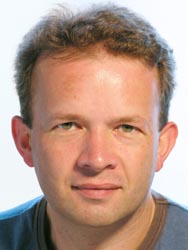Dedicated Focus

NAME: Richard Mallett
COMPANY: TV One
TITLE: Chief of Technology
BACKGROUND: Mallett helped form the U.K. side of the company when it was created under the name Vine Micros in 1984. Consequently in 1988 they produced their first video product.
SCN: What is your position, and what does it entail?
Richard Mallett: My new position is chief of technology, which allows me to focus almost purely on new technologies available to TV One to produce and enhance our range of professional and broadcast video converters. I also head up the research and development of our CORIO FPGA scaling technology, which has matured over the last 20 years.
I had previously been the research and development manager. The new position helps by taking away the day-to-day running of the department-thus leaving me involved purely in new product development.
SCN: How has your background prepared you for your new role?
RM: I have been developing video products for 20 years, starting at a time when the highest specification PCs had either MGA or CGA graphics cards. I've dealt with some simple graphics formats to sophisticated motion-tracking systems that are now used in our CORIO core. In those years I've gained a wealth of experience, not only in video, but also in quality product development key to our philosophy.
A daily selection of the top stories for AV integrators, resellers and consultants. Sign up below.
SCN: How is the CORIO2 technology, and the CORIO technology before it, important to the industry?
RM: CORIO technology was introduced in 1998 and was quite a leap for us at the time, merging the previous hardware-only devices we previously sold with units now equipped with 'intelligence' in the form of a small micro-controller. Although, looking back, it seemed an obvious thing to do; it did allow us to create a whole new range of products tailored to individual markets-and won the approval of some large manufacturers for OEM versions. By using micro-controllers it allowed us to create and develop new units quicker and cheaper.
CORIO2 technology was introduced to the market several years later in the form of our C2-5100 unit, which let us basically update the whole unit to add new features, as well as maintain an ever-expanding image resolution database. By using large FPGAs (field programmable gate arrays) in our units, we could effectively change the hardware as well as the software. Our previous technology used PLDs (programmable logic devices), which were solely factory-programmed. This new innovation allowed us to put far more of the video processing into a single re-programmable chip and thus keep units up to date with the latest requirements.
This user-updateable design has continued through to today. We are constantly adding new features and enhancements-such as edge blending, diagonal interpolation, improved motion compensation, projector gamma correction, etc., completely free of charge to the user. It's what we call 'obsolescence insurance.'
SCN: What is the greatest challenge that you face?
RM: I think this must be in pleasing as many users as possible. We want to enhance the product range we have, while keeping it simple and manageable-something that can be quite difficult to do. Some users like a simple interface for a single function and others want to get into the roots of the system to get the most from it. That undoubtedly creates a conflict in how to develop a product.
We don't want to restrict our users from achieving what they want from our products-whether that is simply converting one video format to another, or merging multiple windows with variable keying, opacity, borders, etc.-so ensuring we get the user interface right is very important, and certainly challenging.
SCN: Where do you see your market heading?
The AVNetwork staff are storytellers focused on the professional audiovisual and technology industry. Their mission is to keep readers up-to-date on the latest AV/IT industry and product news, emerging trends, and inspiring installations.
